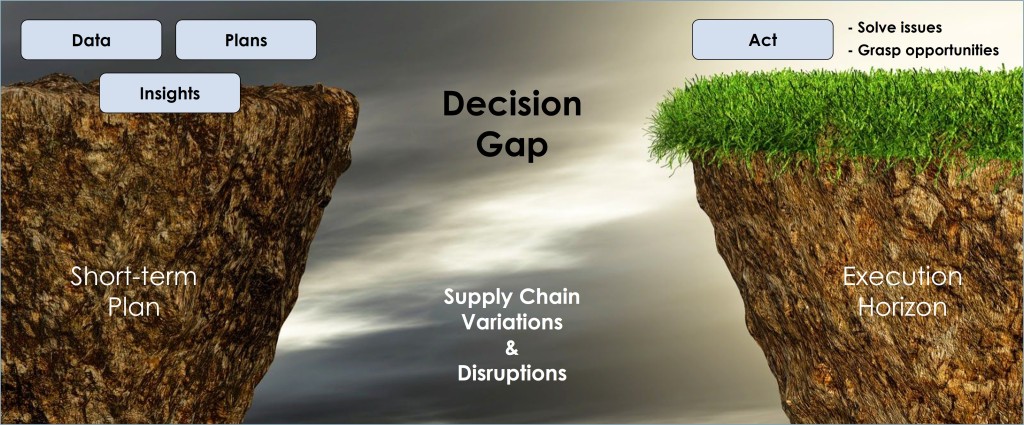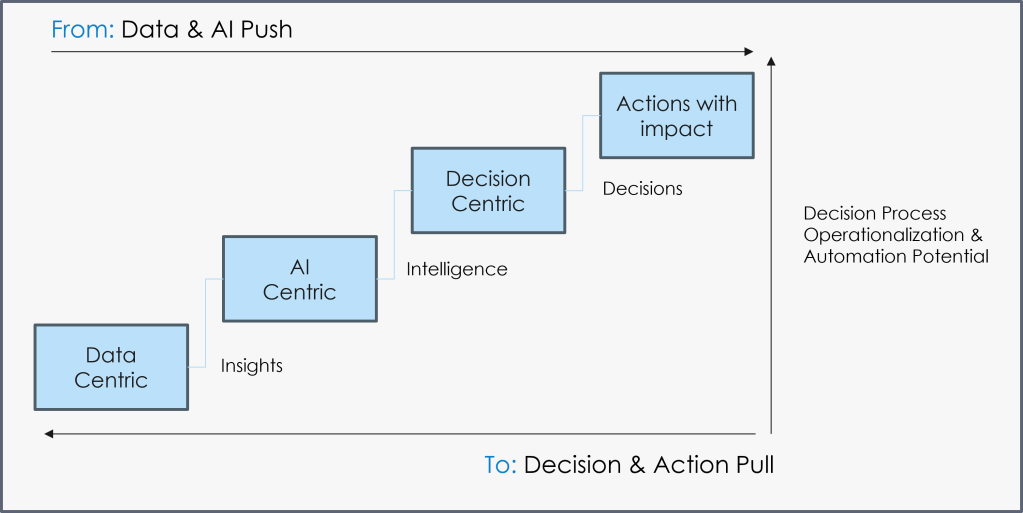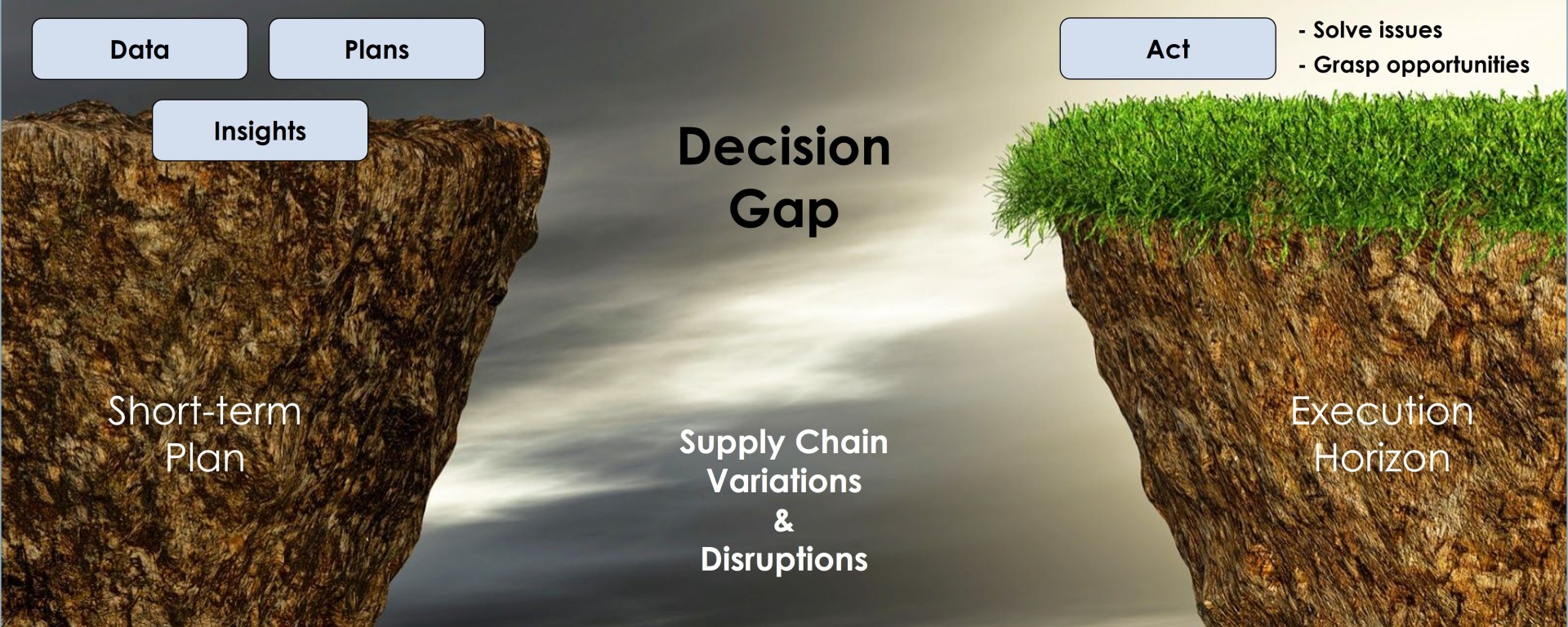As John Lennon said, “Live is what happens while you’re busy making other plans”.
Every supply chain plan or schedule meets variations or disruptions that require corrective decisions and actions. However, a gap remains between data, plans, insights and taking action to solve short and long term issues and grasp opportunities.
I called this the “Decision Gap” in a recent webinar. A week later I noticed that David Pidsley from Gartner called it the “Decision Divide” in his webinar. I pictured it as a dramatic canyon that one (or actually a whole business) has to overcome. Gartner shows it a bit more elegantly with a red dotted line as a divide between data driven insights and Value Realization.


There is indeed a lack of business value realization when we have to make decisions and take action, but we get stuck with Plans, Data & Insights & AI. The decision gap exists from leadership teams down to the shop floor level. Business value, precious time and employee engagement is lost at all levels and all decision types.
The decision gap cannot be solved by pushing more data, plans, analytics and AI.
This gap can only be solved when we think back from the decision, so we can orchestrate the whole data-to-action process. This data-to-action process we call Decision Intelligence (DI). DI can use many different methods and approaches to cover every decision at every level.
For leadership teams, who make bigger decisions, it will be important to properly frame decisions, have clearly aligned analytics requirements, decision trade-offs, a focus on decision speed, quality, a checklist to minimize inherent decision bias and an ability to learn from decisions. Large parts of this decision process can be digitised, but not automated.
For the supply chain professional, who makes smaller, more frequent supply chain decisions, the data to action process can be largely digitised and automated by intelligent agents, so decisions can be made at a speed, scale and consistency not possible before. Only outside certain decision thresholds, the human needs to be in the loop of these smaller decisions.
As I highlight in below schematic, only a decision & action pull approach makes digitization and operationalization of the data-to-action process possible. A data, analytics or AI push can not.

It seems like a small change, to think decision and action pull, rather than data push, but it has a rather significant impact. It requires a new decision centric mindset, which might take some time to develop as we’ve been pushing big data & being data centric for about 20 years.
But change is coming. Field research from Gartner highlights that “by 2028, 25% of chief data and analytics officer vision statements will become “decision-centric,” surpassing “data-driven”. This indicates that the mindset in the C-suite is changing.
Get ready for a decision centric (r)evolution!


One thought on “How to Overcome the Supply Chain Decision Gap”